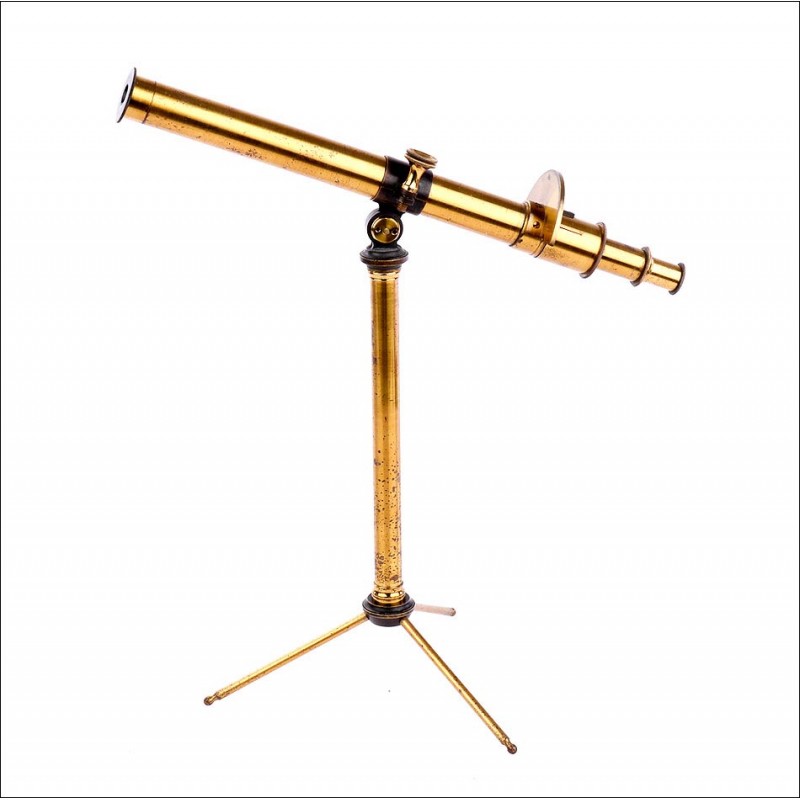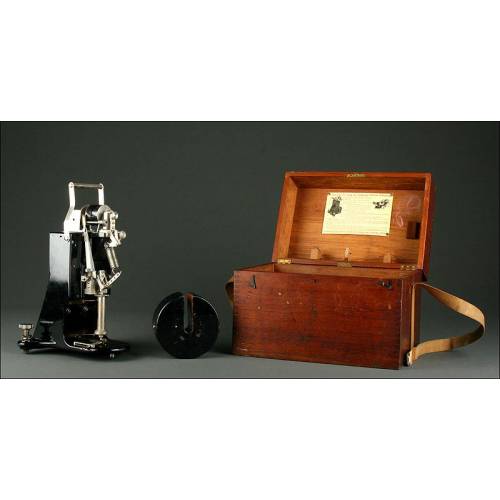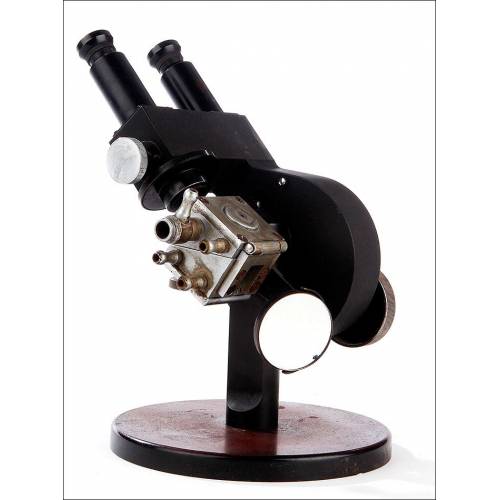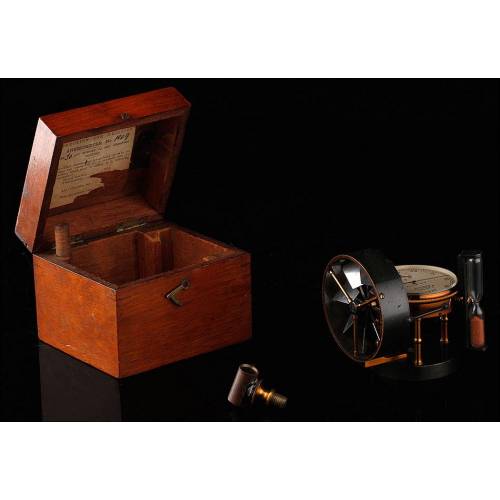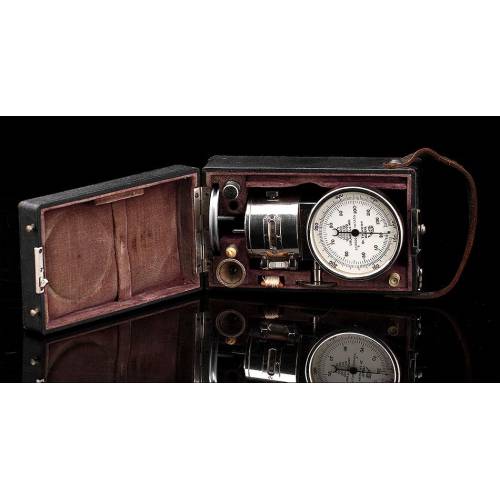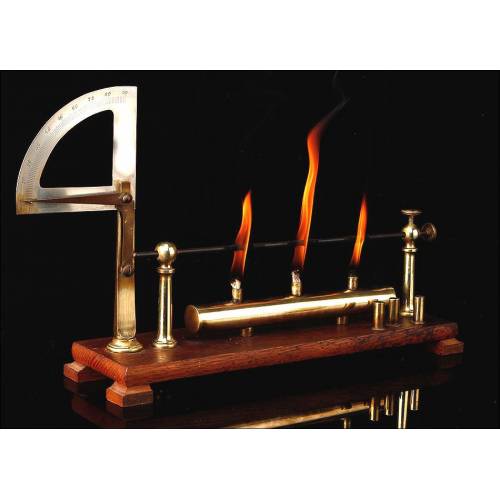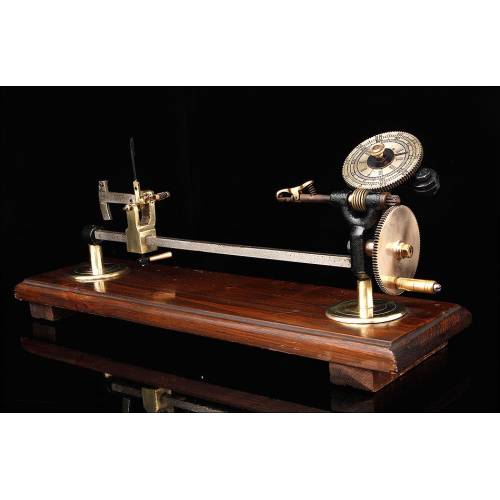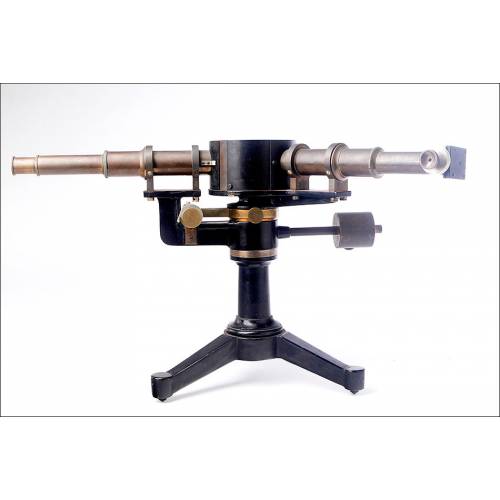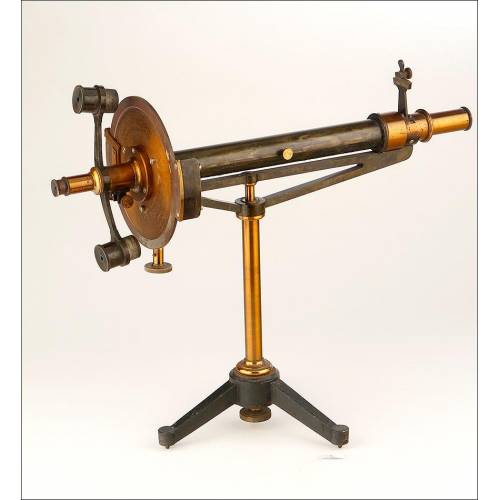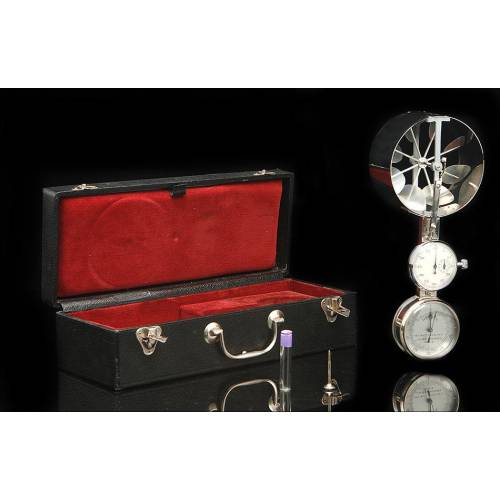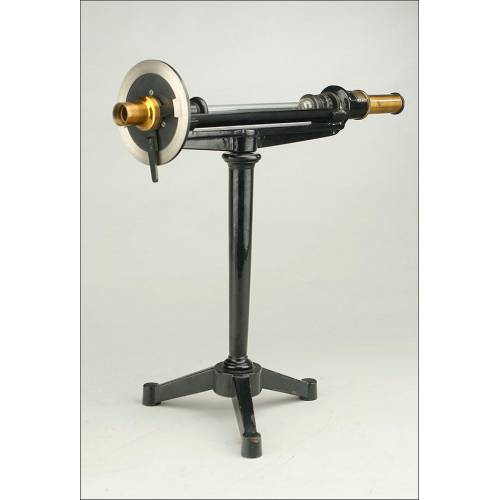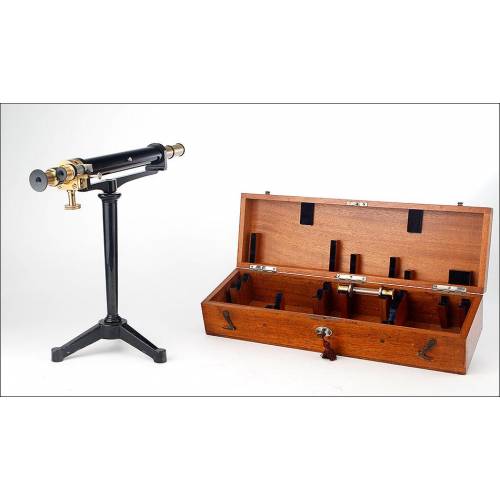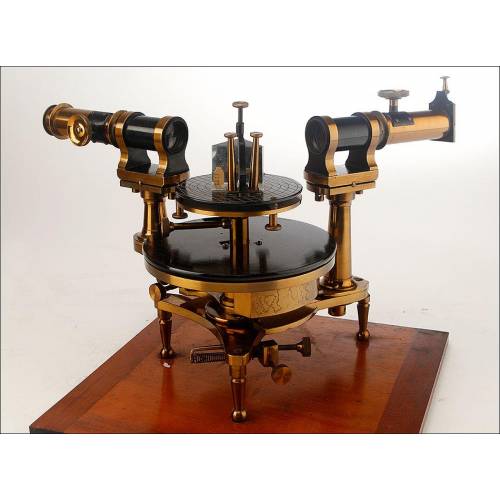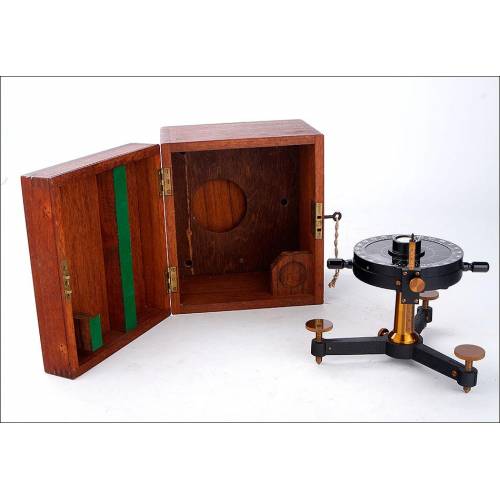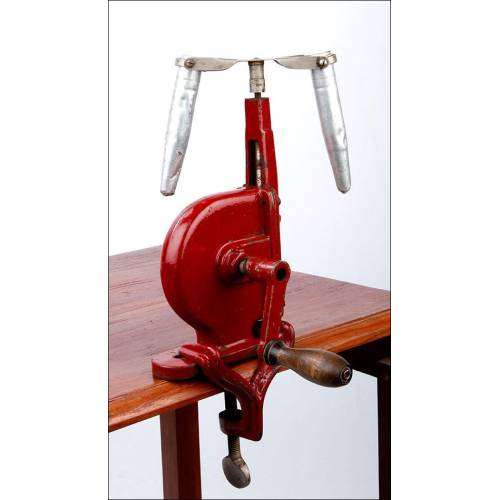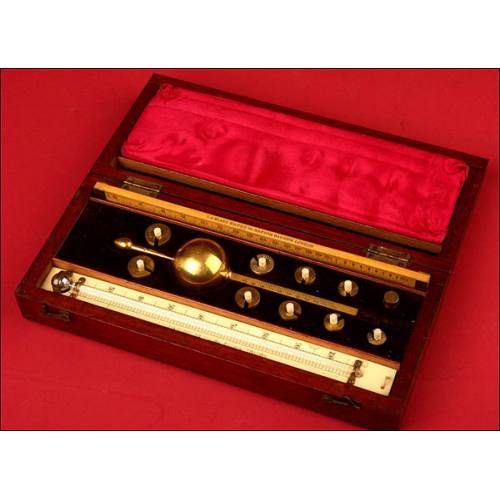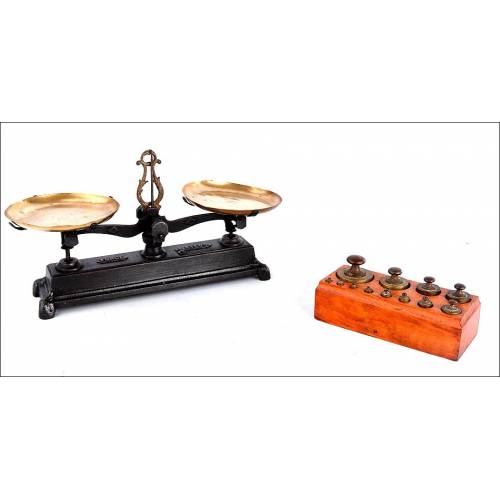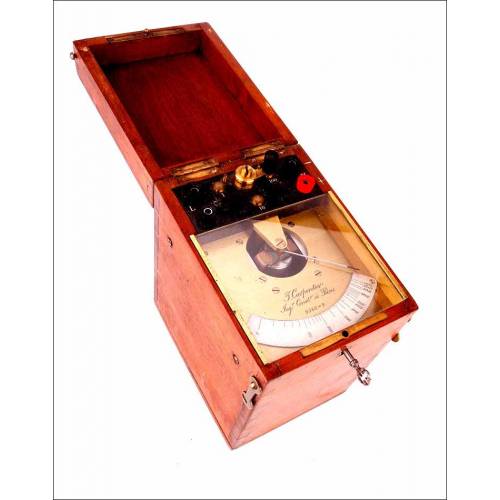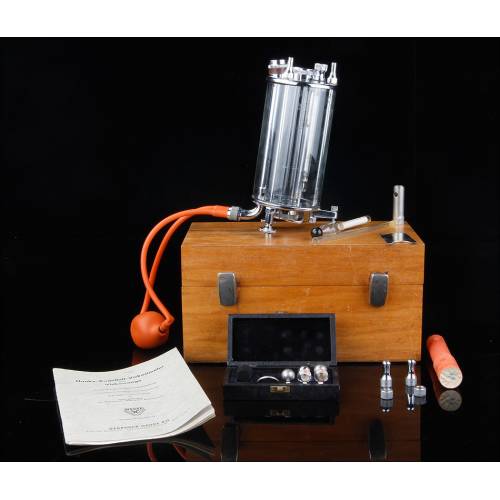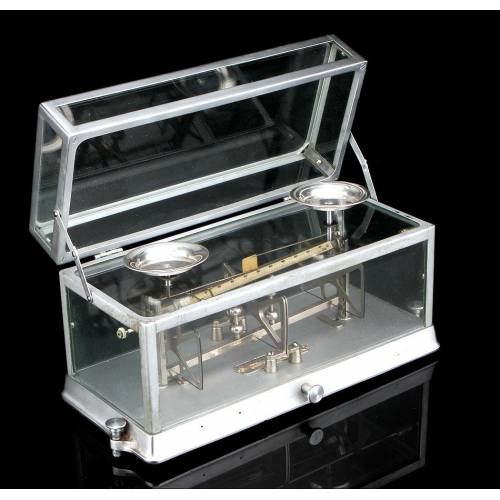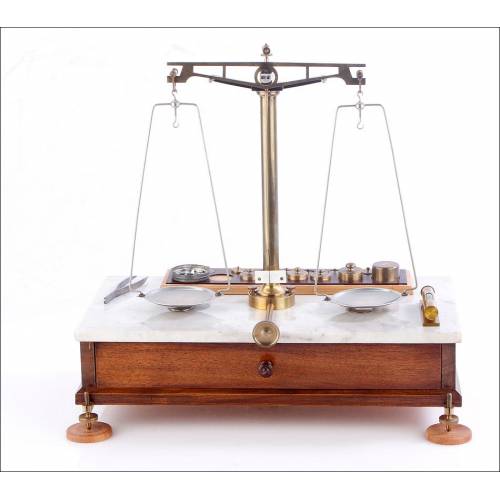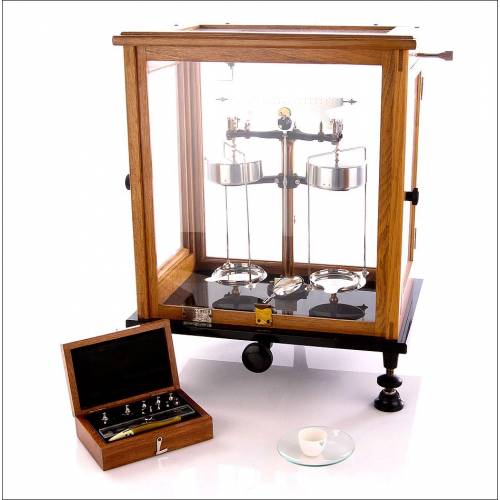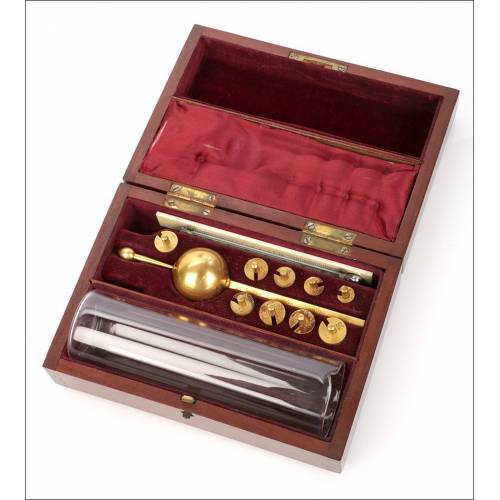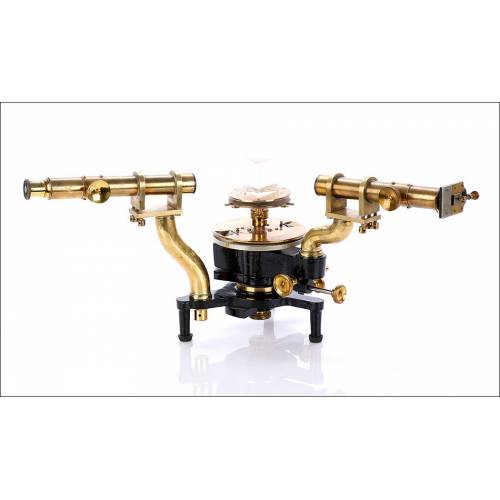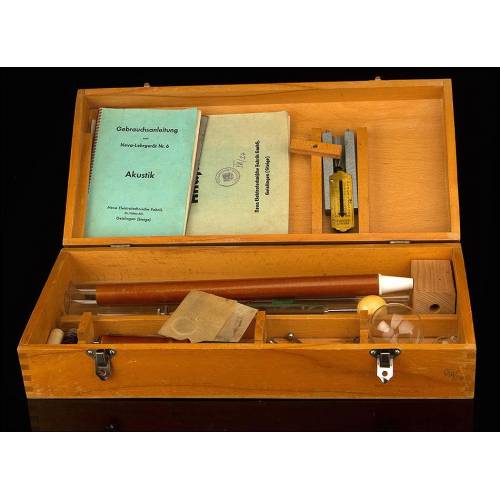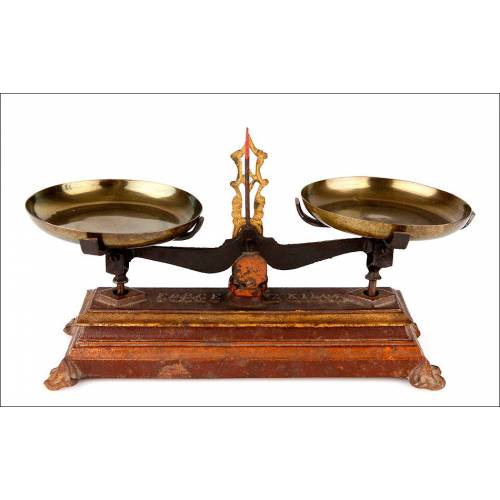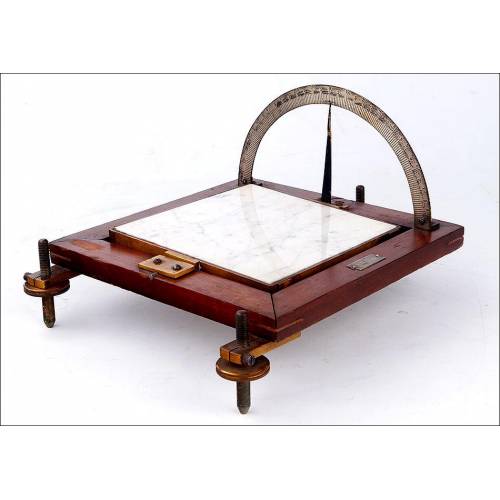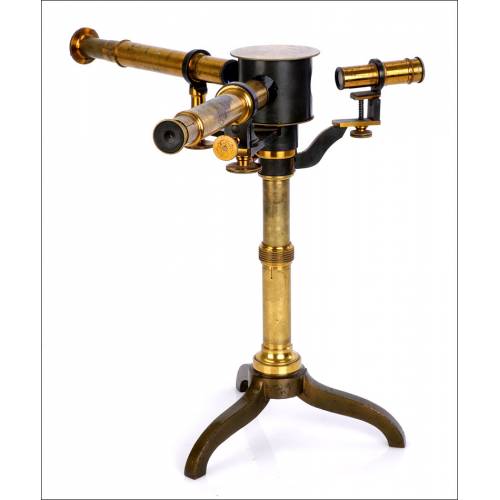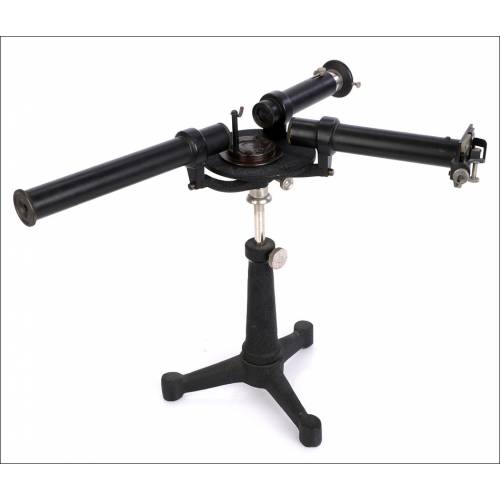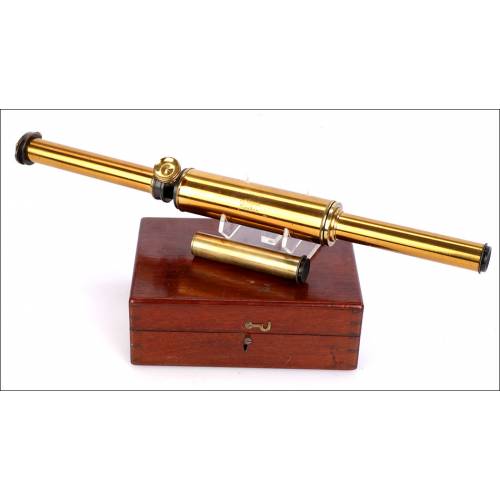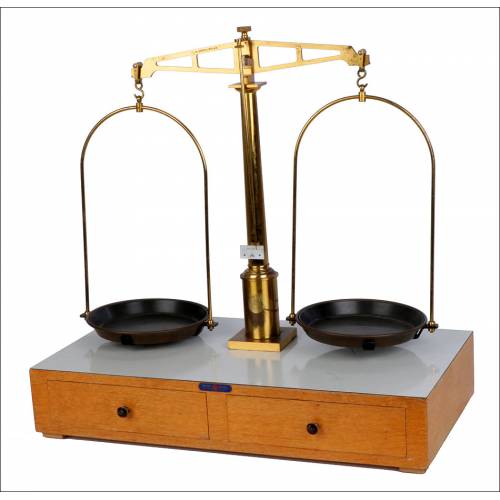B-974
Antique Dr. Steeg & Reuter Polarimeter.
Beautiful antique Dr. Steeg & Reuter polarimeter with original case. Complete and in very good condition.
Sold!
This fine device is an antique polarimeter made in the half of the 19th century by the prestigious firm Dr. Steeg & Reuter. A polarimeter is an instrument used to determine the angle of rotation caused by passing polarized light through an optically active substance. The one that we can see in these images is more than one hundred years old and has survived to our days in great condition, with all its original component parts. It is a portable instrument; the tripods legs can be stored inside one of the brass pieces. The polarimeter comes in its original case, also greatly preserved. The instrument is made of golden brass. The metal looks good and preserves the original transparent lacquered finish. The kit is made up by the polarimeter itself and a brass tripod on which it must be set. The instrument preserves the original lenses, the scale and the original glass pipes. The storing case is original too and bears the companys name, Dr. Steeg & Reuter/Bad Homburg vor der Höhe, engraved in the cover. Inside it is covered by pink velvet, also very well preserved. This fascinating antique polarimeter is a real collectors piece, as nostalgic as attractive. Measurements: Width: 12.5 in / 32 cm. Alto: 12.5 in / 32 cm.History of Dr. Steeg & Reuter The company Dr. Steeg & Reuter/Bad Homburg vor der Höhe is not widely known, but their discoveries and innovations had a worldwide impact on teaching and science, between the late 19th and the early 20th centuries. For example, the X-ray experiments could not have been accomplished without their discoveries. Antique microscopes made by famous makers such as Leitz often mounted component parts and pieces made by Dr. Steeg & Reuter, and so did many turn-of-the-century radio sets and phonographs. The company was founded in 1855 by Wilhelm Steeg in Hamburg, Germany. They soon became famous for preparing perfectly oriented crystal sections. After 1930, Dr. Steeg & Reuter specialized in quartz technology; the decline of the company started in the 1960s, when cheap mass produced quartz resonators from Japanese manufacturers inundated the market.

